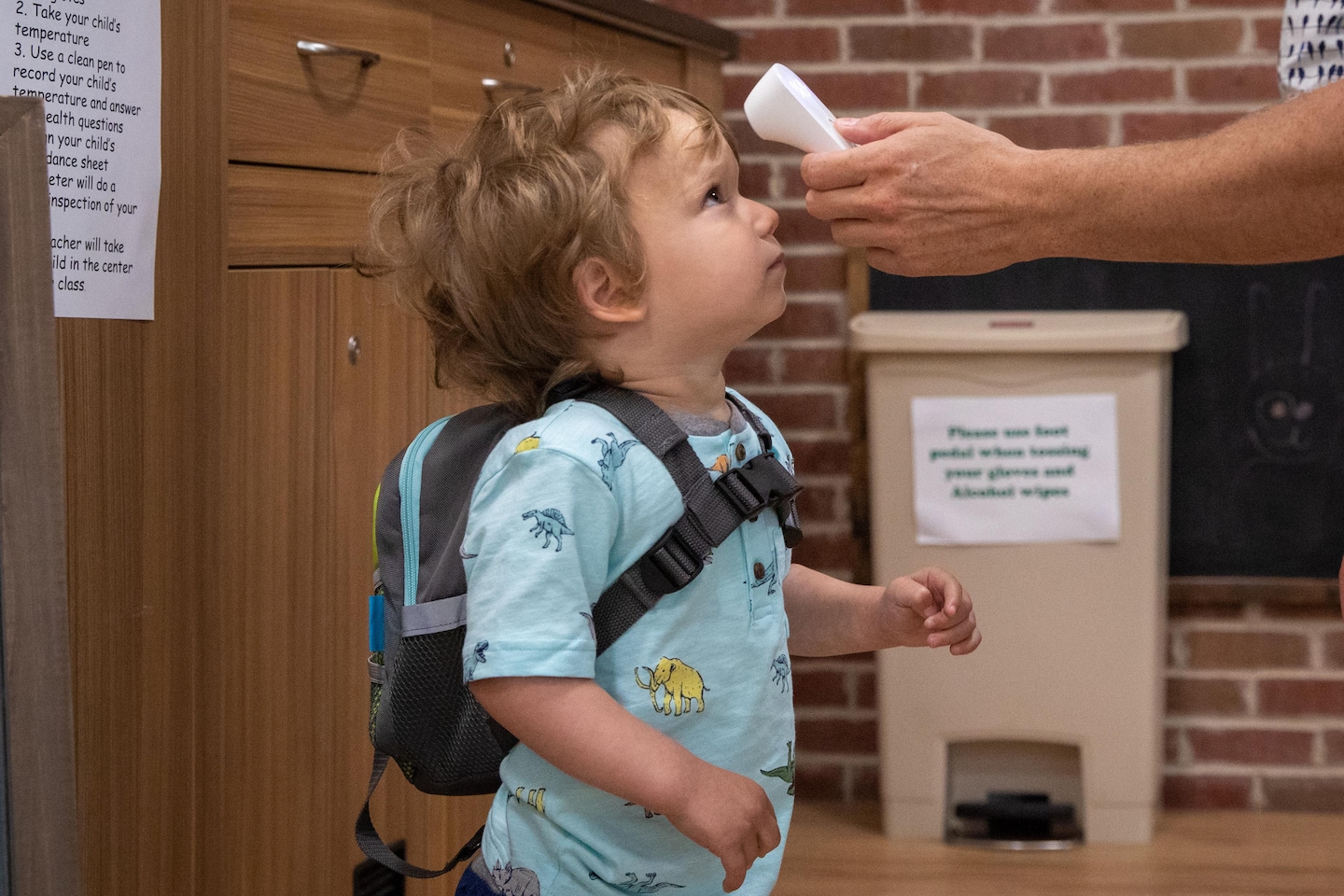Rhode Island’s successful reopening of child-care programs shows ‘there is a path,’ CDC director says

“When things are done with vigilance, in partnership with the public health community, that you can in fact … be able to reopen child care and not have significant secondary transmission,” Redfield said during a briefing Friday with reporters.
The study involved child-care programs that had been shuttered for three months. The state allowed them to reopen June 1 because cases of covid-19, the disease caused by the virus, had dropped significantly. By July 31, 666 programs had been approved to care for about 19,000 children.
During that two-month period, 52 confirmed and probable cases were reported across 29 child-care programs, according to state health department investigators. In 20 programs, there was only one case, with no apparent further spread. Only four of the 666 programs had cases that involved possible spread of the virus, the study found.
Officials attributed the success to the low number of coronavirus infections across the state and the programs’ strict adherence to protocols for safe reopening. Enrollment was restricted to a maximum number of people — initially 12 and then raised to 20 — including staff members. Staff members and students were not allowed to switch between groups. Universal masking was required for adults. Both adults and children were screened daily for symptoms.
“The apparent absence of secondary transmission” within the other 662 child-care programs was likely the result of health department efforts to contain the spread and ‘child-care programs’ adherence to [state] requirements, in particular maximum class sizes and use of face masks for adults,” the study said.
The findings come as many schools and universities across the country are reopening for in-person classes, or a hybrid approach of in-person and virtual learning. Some school districts have reported rapidly rising covid-19 cases among students. At least three universities across the country have reversed course on their plans to hold in-person classes for the semester amid outbreaks among students in the first weeks of class.
In other places, child-care programs are taking place in the same school buildings that were closed because of the pandemic. Schools in Montgomery County, Md., won’t open for traditional classes in the fall, but hundreds of elementary schoolchildren may be taking part in “distance learning hubs” in the same buildings.
Redfield said the experience of the Rhode Island programs may provide lessons for others.
“I think this is an inspiring article to tell individuals that there is a path where one can use and partner with their public health authorities and safely get these child-care programs reopened, which again, are very important for our country,” he said. “And again, as an extension, we’re trying to get these schools reopened.”
Other experts said the findings would be harder to apply for school reopening.
“This study provides encouraging data about how to safely keep open child-care centers where there is good adherence to safety protocols, particularly in states where case numbers are stable or declining,” said Jennifer Nuzzo, an epidemiologist at the Johns Hopkins Center for Health Security.
“But I don’t think we can fully extend these results to schools, given that we think transmission risk may increase with age,” she said. “That said, the finding that safety measures, such as mask-wearing, can potentially prevent secondary transmission, should increase our confidence that these measures will be important in school settings.”
In early June, Rhode Island was reporting about 100 new cases a day, and caseloads fell even lower in late June and early July, according to Washington Post data. But in the last two weeks of July, cases increased as the virus spread in the community, the study said. That’s when the possible secondary spread took place in the four child-care programs, researchers said. Most of the cases occurred from mid- to late-July when coronavirus incidence in the state was increasing.
Rhode Island reported 130 new positive cases Friday and that 1.8 percent of its coronavirus test results are positive — lower than the 3 percent rate that Redfield said earlier this week should be the goal for the country. That compares with a national rate of about 6 percent for the past seven days, according to Thursday’s coronavirus brief prepared for senior U.S. officials by FEMA.
Even with the limited spread, “the impact on child-care programs was substantial,” the report said. There were 687 children and 166 staff members who had to be quarantined as part of the Rhode Island investigations into confirmed and probable infections. Of the 52 total cases, 30 were among children, with an average age of 5, and 22 were among adults — 20 teachers and two parents.
Read more:






